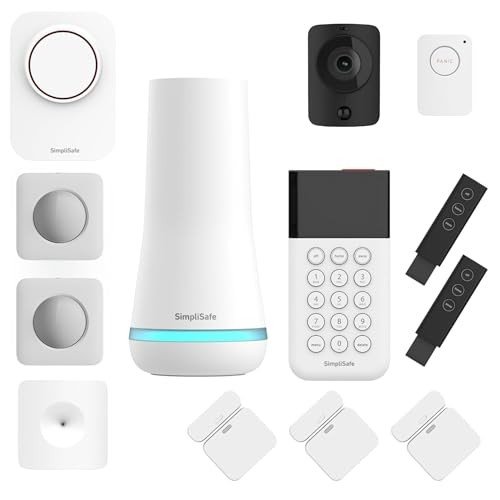Traditional Lighting in the UK: A Comprehensive Overview
Traditional lighting holds a valued place in the homes and public areas of the United Kingdom. With its ability to evoke nostalgia, beauty, and heat, traditional lighting fixtures use not only visual appeal but also useful worth. This post explores the different types of traditional lighting typical in the UK, their history and advancement, popular designs, and how to incorporate them into modern decor.
A Historical Perspective on Traditional Lighting
The advancement of lighting in the UK has actually been comprehensive. From the flickering flames of candle lights and oil lamps to the advent of gas and electrical lights, the journey is as fascinating as it is informing.
Key Milestones in Lighting History:
- Candles (Before 1800s): The earliest kind of synthetic light, utilizing tallow or beeswax.
- Oil Lamps (Late 18th Century): These ended up being popular in homes and theaters, offering brighter lighting than candles.
- Gas Lighting (Early 19th Century): Revolutionized public and street lighting before electricity took precedence.
- Electric Lighting (Late 19th Century): Marked the shift to modernity, with incandescent bulbs gradually changing older types.
Each of these advancements led the way for traditional lighting, which still incorporates ancient methods into contemporary designs.
Kinds Of Traditional Lighting
Traditional lighting can be classified into a number of unique types, each with its distinct characteristics.
1. Chandeliers
Chandeliers are typically the centerpiece of a room. They can be found in different styles, from elaborate Victorian styles to simple, rustic models.
Popular Features:
- Crystal decorations
- Iron structure
- Numerous bulb types
2. Wall Sconces
Wall sconces supply both creative flair and soft illumination. They can be utilized in corridors, living rooms, or restrooms, improving the atmosphere of a space.
Common Styles:
- Candle-style sconces
- Brass or iron fixtures
- Vintage-inspired designs
3. Table Lamps
Table lamps embody the versatility of traditional lighting as they can suit any room. Ranging from simple designs to ornate pieces, they are perfect for reading nooks, side tables, or desks.
4. Floor Lamps
Similar to table lamps in style and function, floor lamps can produce cozy corners in a home. Vintage designs often consist of tripod bases or intricate patterns.
5. Lanterns
Though typically connected with outdoor settings, traditional lanterns can likewise be utilized inside for a rustic touch. They can be found in different materials consisting of wood and metal.
Incorporating Traditional Lighting into Modern Decor
In a world significantly leaning towards minimalism and modern designs, traditional lighting still holds its ground. The secret is to maintain a balance. Here are some suggestions for including traditional lighting into a contemporary home:
1. Mix Styles
Integrate traditional lighting with modern furnishings to create an eclectic room. For example, a vintage chandelier can be hung above a streamlined table.
2. Use Dimmer Switches
To manage the atmosphere, install dimmer switches that permit soft lighting, which complements both traditional and modern interiors.
3. Go With Mixed Materials
Select lighting fixtures that integrate various products, such as a wood lamp with a metal or glass base, to bridge the space in between old and brand-new.
4. Highlight Architectural Features
Usage traditional fixtures to highlight special architectural features in your home. For example, hanging a vintage lantern in a hallway with exposed brick boosts its rustic appeal.
5. Incorporate Natural Elements
Select styles that incorporate natural materials such as wood or wrought iron. These components tend to mix well with modern design while keeping a traditional flair.
Table: Comparison of Traditional Lighting Types
| Lighting Type | Description | Typical Materials | Normal Settings |
|---|---|---|---|
| Chandeliers | Decorative ceiling fixtures, frequently elaborate | Crystal, metal | Dining-room, ballrooms |
| Wall Sconces | Mounted fixtures that provide ambient light | Brass, iron | Hallways, living spaces |
| Table Lamps | Portable lamps for tables and desks | Glass, ceramic | Bed rooms, offices |
| Floor Lamps | Standalone lamps for corner lighting | Wood, metal | Living rooms, dens |
| Lanterns | Rustic or vintage light sources | Wood, metal | Patios, gardens |
Frequently Asked Questions
1. What is traditional lighting?
Answer: Traditional lighting describes light that embody historical or traditional styles, frequently identified by the usage of elaborate products, elaborate patterns, and a warm aesthetic.
2. How can lightingandlamps.uk keep traditional lighting fixtures?
Response: Regular dusting and occasional deep cleansing are necessary. For fixtures with glass or crystals, utilize a mild glass cleaner. For metal parts, ensure you utilize appropriate cleansing services that will not damage the surface.
3. Are traditional lighting fixtures energy-efficient?
Response: Many traditional fixtures can accommodate modern LED bulbs, which use much better energy performance. Constantly examine compatibility when changing to LED options.
4. Can I mix traditional lighting with modern design?
Answer: Yes, blending traditional lighting with modern design can develop a distinctively welcoming space. Balance is crucial; select complementary styles to keep visual consistency.
5. What is the very best way to pick traditional lighting for my home?
Response: Consider your home's overall design, the function of the space, and individual taste. Take measurements to make sure suitable sizing and select products and colors that balance with existing decor.
Traditional lighting functions as an enduring link to history, craftsmanship, and aesthetics, proving that classic styles have their rightful location, even amid developing patterns. Comprehending the different kinds of traditional lighting and their application can help property owners develop welcoming spaces that reflect both sophistication and warmth, flawlessly blending the past with today.

